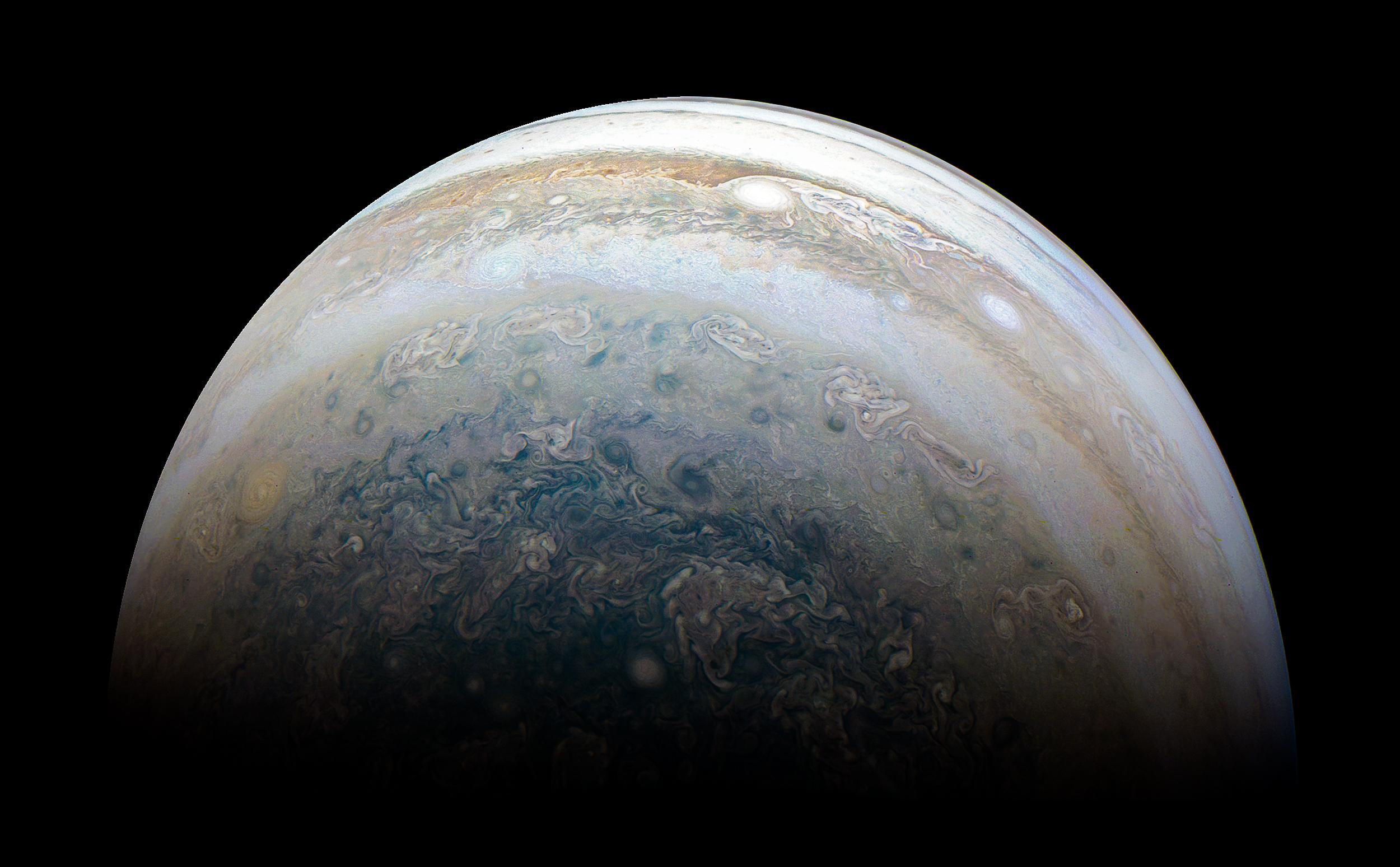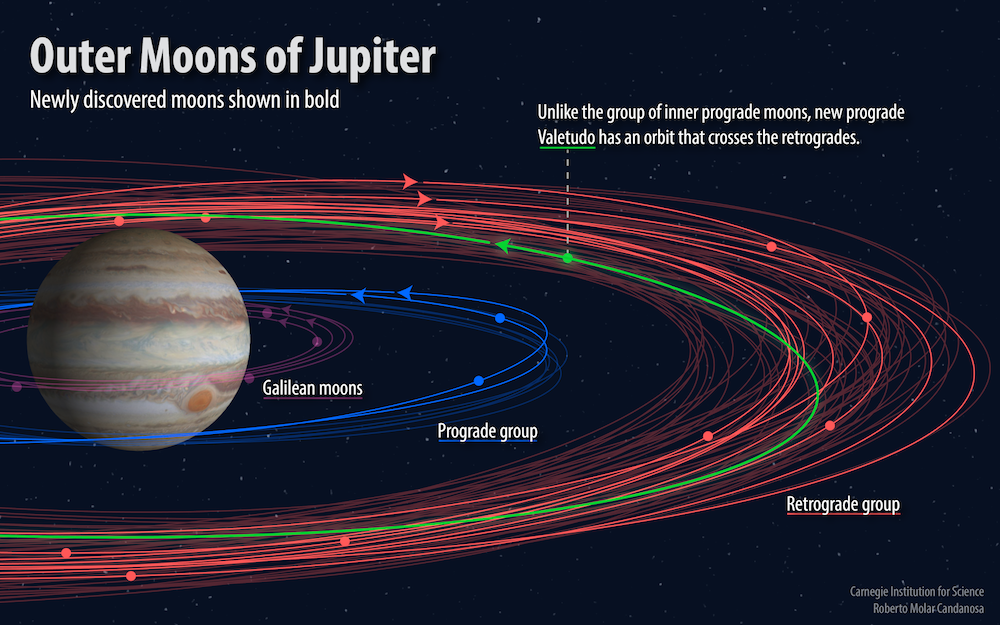Astronomers Confirm 12 New Moons Orbiting Jupiter

Image of Jupiter's surface taken by the Juno spacecraft.
Source: NASA/JPL-Caltech/SwRI/MSSS/Kevin M. Gill
In addition to the beautiful intricacies of Jupiter's surface being revealed to us in the past months by the NASA Juno spacecraft, a new piece of information concerning our largest planetary neighbour has come to light in the last couple of days - that Jupiter has twelve newly confirmed moons; two of which had been 'spotted' at earlier times and ten of which have been discovered for the first time.
The reason that these moons have not been discovered is simply because they are all - on moon scales - quite tiny. Ganymede, for example, Jupiter's largest moon, is 5,268km in diameter whereas the newly discovered moons are only a matter of a few kilometres; not in the region of thousands. They have also been obscured by the relative brightness of Jupiter itself - very bright and large objects can make very small, dim objects hard to detect. Despite the fact that planets themselves don't emit light, the concept of finding these moons is not dissimilar to trying to spot a single candle on the outskirts of a bonfire.

the outer retrograde orbit group but has a prograde orbit.
Source: Carnegie Institution for Science:
There is an especially odd feature concerning one of these newly discovered moons, Valetudo. It has what astronomers call a prograde orbit, which is an orbit in the direction of the spin of the parent planet (in this case Jupiter). The odd feature, however, is that the prograde orbit of Valetudo lies within the group of Jupiter's moons which have retrograde orbits; that is, orbits which are in the opposing direction to the parent planet. This could potentially have messy consequences for the outer group of Jupiter's moons, as Valetudo is traveling on the wrong side of the Jovian road!
These new-found discoveries may help astronomers piece together the possible history for Jupiter's natural satellites, as the odd structure of groups and orbits may favour a history with possible violent collisions.

